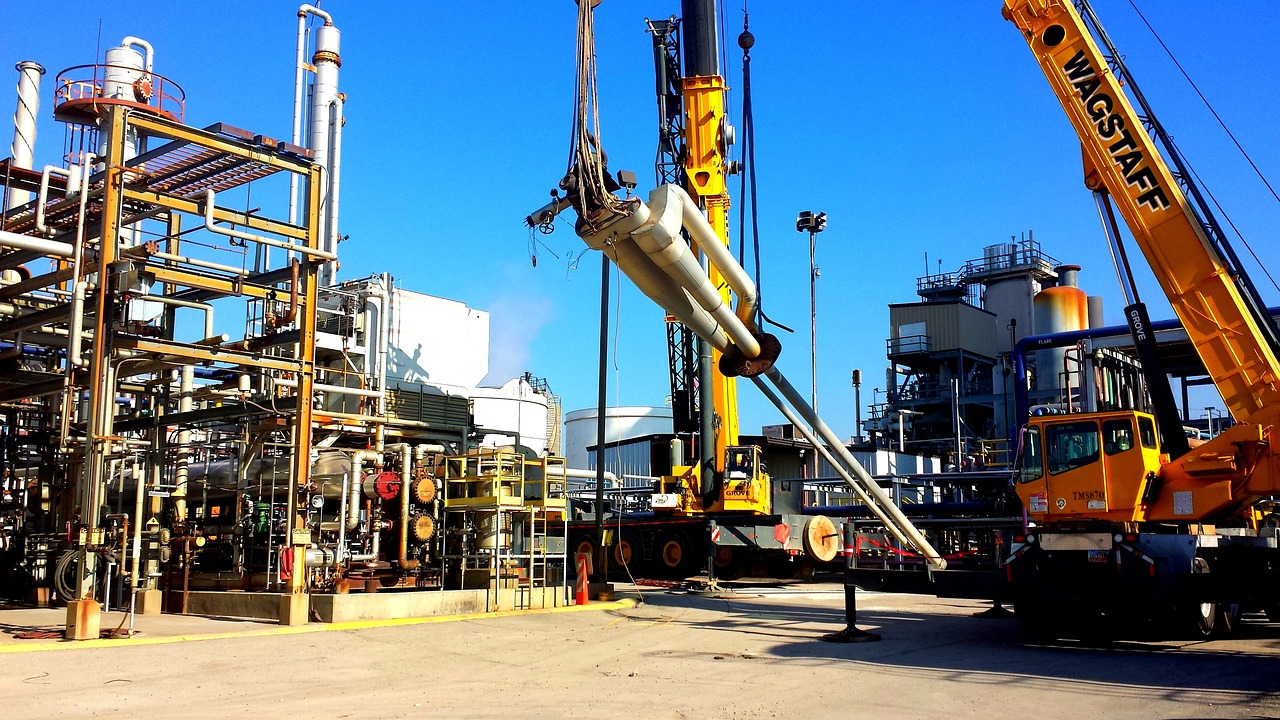In recent years, financial markets in Asia have become increasingly dynamic and Traders sophisticated. However, this growth has also attracted the scrutiny of regulators who are concerned about the potential risks and market manipulations associated with high-speed trading and short selling. These trading practices, while legitimate and beneficial for market liquidity under certain conditions, can sometimes lead to market volatility and manipulative activities. As a result, several Asian countries are implementing stricter regulations to curb potential abuses and ensure market stability.
Understanding High-Speed Trading and Short Selling

High-Speed Trading
High-speed trading, also known as high-frequency trading (HFT), involves the use of sophisticated algorithms and powerful computers to execute a large number of trades at extremely high speeds. HFT firms typically engage in market-making, arbitrage, and other strategies that rely on the rapid execution of trades to capitalize on small price discrepancies. While HFT can enhance market liquidity and efficiency, it can also contribute to market volatility and flash crashes.
Short Selling
Short selling involves borrowing securities and selling them on the open market with the intention of buying them back at a lower price. Short sellers profit from a decline in the price of the securities. This practice can provide liquidity and contribute to price discovery, but it can also lead to downward pressure on stock prices, particularly if large-scale short selling is involved.
Regulatory Concerns and Responses
Market Volatility and Manipulation
Regulators in Asia have expressed concerns that high-speed trading and short selling can exacerbate market volatility and facilitate manipulative activities. Flash crashes, where the market experiences a sudden and dramatic drop in prices, are often linked to the activities of HFT firms. Similarly, coordinated short selling can lead to significant downward pressure on stock prices, potentially triggering panic selling among investors.
Measures to Address Risks
In response to these concerns, several Asian countries have introduced regulatory measures to address the risks associated with high-speed trading and short selling. These measures include increased transparency, stricter reporting requirements, and enhanced surveillance to detect and prevent manipulative activities.
Country-Specific Crackdowns
China
China has been at the forefront of implementing strict regulations to curb the activities of high-speed traders and short sellers. The China Securities Regulatory Commission (CSRC) has introduced a range of measures, including stricter reporting requirements for HFT firms and increased scrutiny of short selling activities. Additionally, the CSRC has enhanced its surveillance capabilities to detect and prevent market manipulation.
Japan
Japan has also taken steps to regulate high-speed trading and short selling. The Financial Services Agency (FSA) has implemented rules requiring HFT firms to register with the regulator and comply with reporting requirements. Moreover, Japan has introduced circuit breakers to prevent flash crashes and limit extreme market volatility.
South Korea
South Korea has focused on enhancing transparency and surveillance to address the risks associated with high-speed trading and short selling. The Korea Financial Services Commission (FSC) has implemented measures requiring HFT firms to register and disclose their trading activities. Additionally, the FSC has increased penalties for market manipulation and abusive short selling practices.
Comparative Analysis of Regulatory Measures
| Country | Regulatory Body | Key Measures Implemented | Effectiveness in Reducing Risks |
|---|---|---|---|
| China | CSRC | Stricter reporting requirements, increased scrutiny, enhanced surveillance | Moderate to high effectiveness in detecting and preventing manipulation |
| Japan | FSA | Registration for HFT firms, reporting requirements, circuit breakers | Moderate effectiveness in reducing volatility |
| South Korea | FSC | Registration and disclosure requirements, increased penalties for manipulation | High effectiveness in enhancing transparency and reducing abusive practices |
Impact on Market Participants
High-Speed Traders
The crackdown on high-speed trading in Asia has had a significant impact on HFT firms. Increased regulatory scrutiny and reporting requirements have led to higher compliance costs and operational challenges. Some HFT firms have scaled back their activities or exited certain markets due to the heightened regulatory environment. However, firms that have adapted to the new regulations and invested in compliance have continued to thrive.
Short Sellers
Short sellers have also faced increased regulatory pressure in Asia. Enhanced surveillance and stricter reporting requirements have made it more challenging for short sellers to operate without detection. The increased penalties for abusive short selling practices have deterred some market participants from engaging in aggressive short selling strategies. Nevertheless, short sellers who comply with the regulations continue to play a vital role in providing market liquidity and facilitating price discovery.
Benefits and Challenges of the Regulatory Crackdown
Benefits
- Market Stability: The regulatory measures have contributed to greater market stability by reducing the likelihood of flash crashes and extreme volatility.
- Transparency: Increased transparency and reporting requirements have enhanced market integrity and investor confidence.
- Fairness: The crackdown on manipulative practices has created a more level playing field for all market participants.
Challenges
- Compliance Costs: High-speed traders and short sellers face increased compliance costs, which can be particularly burdensome for smaller firms.
- Operational Challenges: The need to adapt to new regulations and reporting requirements has created operational challenges for market participants.
- Market Liquidity: While regulatory measures aim to curb abusive practices, they can also inadvertently impact market liquidity by discouraging legitimate trading activities.
Future Outlook
The regulatory crackdown on high-speed trading and short selling in Asia is likely to continue as regulators strive to ensure market stability and integrity. Future measures may include further enhancements to surveillance technologies, stricter penalties for non-compliance, and greater international cooperation to address cross-border trading activities. Market participants will need to remain vigilant and adaptable to navigate the evolving regulatory landscape.
Analysis Table
| Aspect | High-Speed Trading (HFT) | Short Selling |
|---|---|---|
| Definition | Trading using algorithms to execute large volumes at high speeds | Selling borrowed securities to buy back at a lower price |
| Benefits | Increases market liquidity, enhances price discovery | Provides liquidity, contributes to price discovery |
| Risks | Market volatility, flash crashes, potential manipulation | Downward pressure on prices, potential market manipulation |
| Regulatory Concerns | Market stability, manipulation | Market stability, manipulation |
| Key Regulatory Measures | Reporting requirements, registration, circuit breakers | Reporting requirements, increased penalties |
| Impact on Market Participants | Higher compliance costs, operational challenges | Increased scrutiny, deterrent effect on aggressive strategies |
Comparative Table
| Country | Regulatory Focus | Key Measures Implemented | Effectiveness in Reducing Risks |
|---|---|---|---|
| China | High-speed trading and short selling | Stricter reporting requirements, increased scrutiny, enhanced surveillance | Moderate to high effectiveness in detecting and preventing manipulation |
| Japan | High-speed trading | Registration for HFT firms, reporting requirements, circuit breakers | Moderate effectiveness in reducing volatility |
| South Korea | High-speed trading and short selling | Registration and disclosure requirements, increased penalties for manipulation | High effectiveness in enhancing transparency and reducing abusive practices |
This comprehensive analysis highlights the regulatory efforts in Asia to address the risks associated with high-speed trading and short selling. The measures taken by various countries aim to ensure market stability, enhance transparency, and prevent manipulative practices, ultimately contributing to a more robust and fair financial market environment.
Conclusion
The growing regulatory crackdown on high-speed traders and short sellers in Asia reflects the increasing concern among regulators about market volatility and manipulative activities. While these trading practices can contribute to market efficiency and liquidity, they also pose significant risks that need to be managed. The measures implemented by countries like China, Japan, and South Korea demonstrate a commitment to ensuring market stability and protecting investors. As the regulatory environment continues to evolve, market participants will need to adapt to the new realities and embrace compliance to thrive in Asia’s dynamic financial markets.











